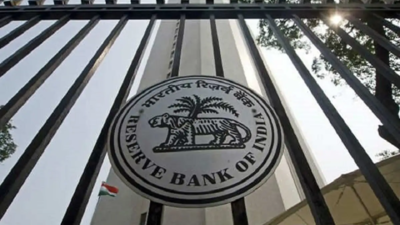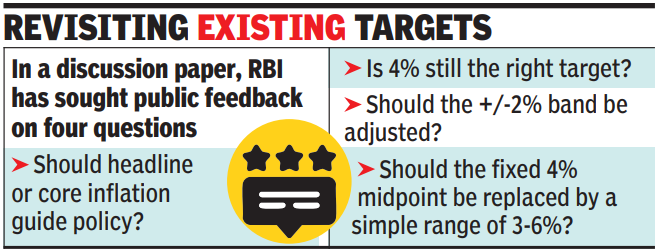
Mumbai: The RBI is re-examining how it targets inflation in its monetary policy. It has however made a strong case for continuing with existing targets. In a discussion paper released on Thursday, the RBI sought public feedback on four questions: should headline or core inflation guide policy; is 4% still the right target; should the +/-2% band be adjusted; and should the fixed 4% midpoint be replaced by a simple range of 3-6%. Responses are due by Sept 18th.The review, due to conclude by March 2026, marks the second formal assessment of the flexible inflation-targeting (FIT) framework since its adoption in 2016, and follows a global trend of central banks consulting more openly on policy.The RBI’s verdict so far is that FIT has worked. Since 2016, average inflation has dropped to 4.9% from 6.8% in the pre-FIT years, while volatility has fallen from 2.3% to 1.5%. The framework proved resilient during the pandemic and again during the Ukraine war, when inflation breached the 6% ceiling. In both cases the Monetary Policy Committee (MPC) was able to shift priorities, first supporting growth, then moving quickly to rein in prices.

But new uncertainties ranging from climate change to volatile commodities, shifting global finance and innovations in payments are straining the framework. The case for retaining headline inflation is strong. Food and fuel make up more than half of India’s consumption basket; ignoring them would make the index less representative. RBI also argues that excluding food inflation would overlook the welfare of the poor, for whom food dominates household budgets. Persistently high food prices influence public expectations and can spill into core inflation. Raghuram Rajan, a former RBI governor, has warned that excluding food would risk eroding public trust. Empirical evidence shows that food and fuel prices tend to converge with core inflation over time, making them too important to ignore.The paper reaffirms the logic of India’s 4% inflation target and the +/-2% tolerance band. The 4% midpoint is supported by evidence that fast-growing economies, due to the Balassa-Samuelson effect, can sustain slightly higher inflation. The wide band is justified by India’s unusually high share of food in its price index.











